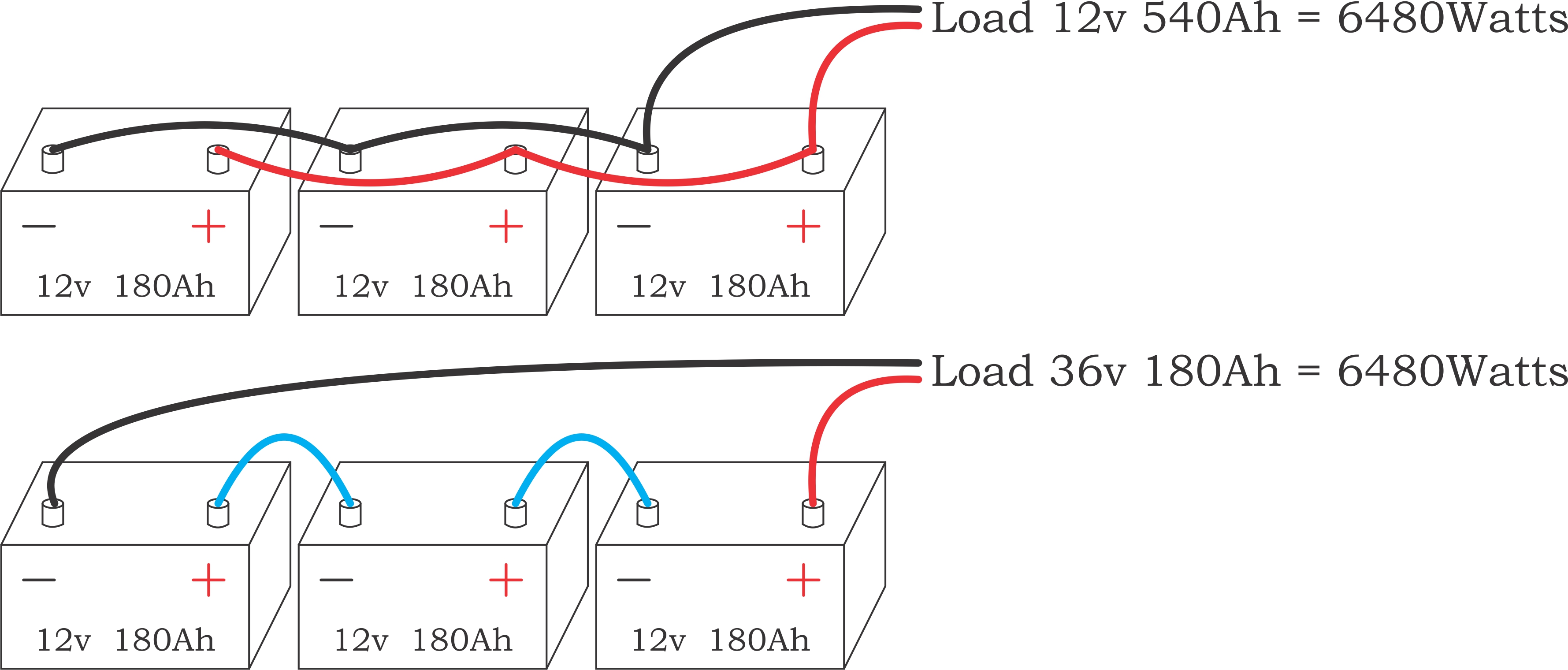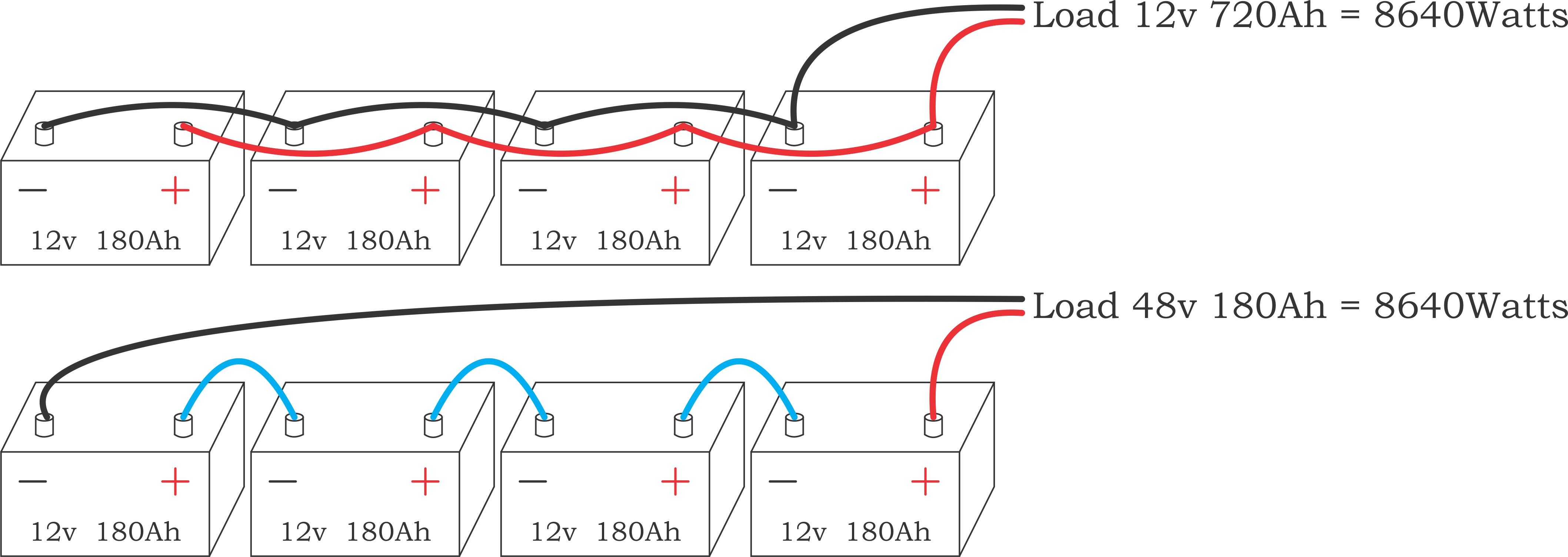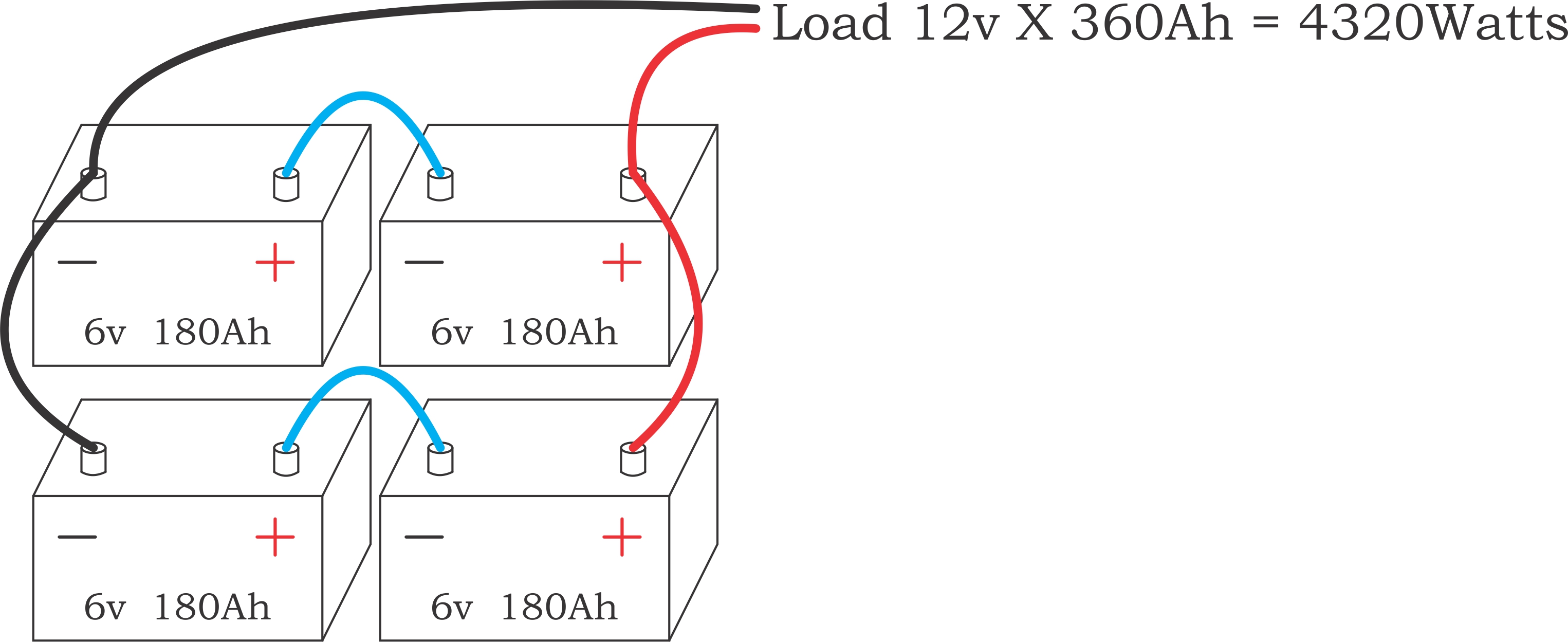If you are going to have more than one battery in your system you are going to have to decide how you’re going to wire them, series or parallel. There are advantages and disadvantages to both but ultimately it comes down to what the devices you are powering require for voltage. Power is measured in watts and without getting too much into the physics of electricity watts is divided into volts and amps. You have a limited ability to manipulate the voltage and the amperage by either connecting them in series or parallel but no matter what the watts stay the same.
volts X amps=Watts. If we take a 12v, 180A battery that would be 12 x 180=2160Watts. Adding a second battery would give us 2160 x 2=4320. An amp hour is a batteries ability to discharge 1 amp for an hour, so a 180Ah battery can discharge 1 amp for 180 hours before it is dead.
If you take these two batteries and connect them in series it will double the voltage but keep the available amperage the same.

And if you now take the batteries and connect them in parallel it will double the amp hours while keeping the voltage the same.

This relationship holds true no matter how many batteries you add to the system.


There are advantages to a 24v system, such as:
- Half the current, think of volts as pressure, amps as flow or current, and watts is the total volume. If you double the pressure at the same volume you cut the flow in half.
- Less heat dissipation, higher flow creates more heat so reducing the amps reduces heat.
- Thinner wire, there is less line loss with lower amperage so a thinner wire is needed.
- Better inverter efficiency, an inverter doesn’t have to work as hard at higher voltage to keep its AC output constant.
- Larger inverters require more voltage, if your inverter is more than 2,000watts it may require 24 volts or more to operate.
Even with these advantages you may still want to run your system on 12v as I have. My fridge and inverter can run off of 12v or 24v but pretty much everything else in my system is 12v. Once you bring your system up to 24v you can’t draw 12v without using a DC to DC inverter. If you were to hook up a light that is designed for 12v to 24v it would fry it, or worse would be plugging your smart phone into a 24v outlet designed to be 12v. To me the extra expense of the DC to DC inverter didn’t offset the cost of the thicker wire so I kept it 12v. However if I ever bump up to a 3000W inverter I will have to also bump up to a 24v system. You just have to make sure that you are sending the right voltage to everything and you’ll be fine.
So now that we’ve gone over that lets talk about combining series and parallel. This would be used to increase battery storage by adding batteries in one voltage and then increasing the voltage to another. An example of this would be using 6v golf cart batteries but still wanting 12v output.
Using four 6v 180Ah batteries would give us the same 4320watts as our first example, now to get it up to 12v and only 12v. If we series the batteries in pares then connect them in parallel we would get the 12 volts we are looking for. You’re essentially treating two 6v as one 12v.

And this can be done by combining as many batteries as needed to obtain the capacity you are looking for.

You can also connect them in series first to bring it up to 24v then connect them in parallel to increase the amp hours.

It is important that all of your batteries match in every way. A weaker battery in the system will bring all batteries down to it’s level. It is best to buy your batteries at the same time and replace them all at the same time. They must be all the same manufacturer and model.
